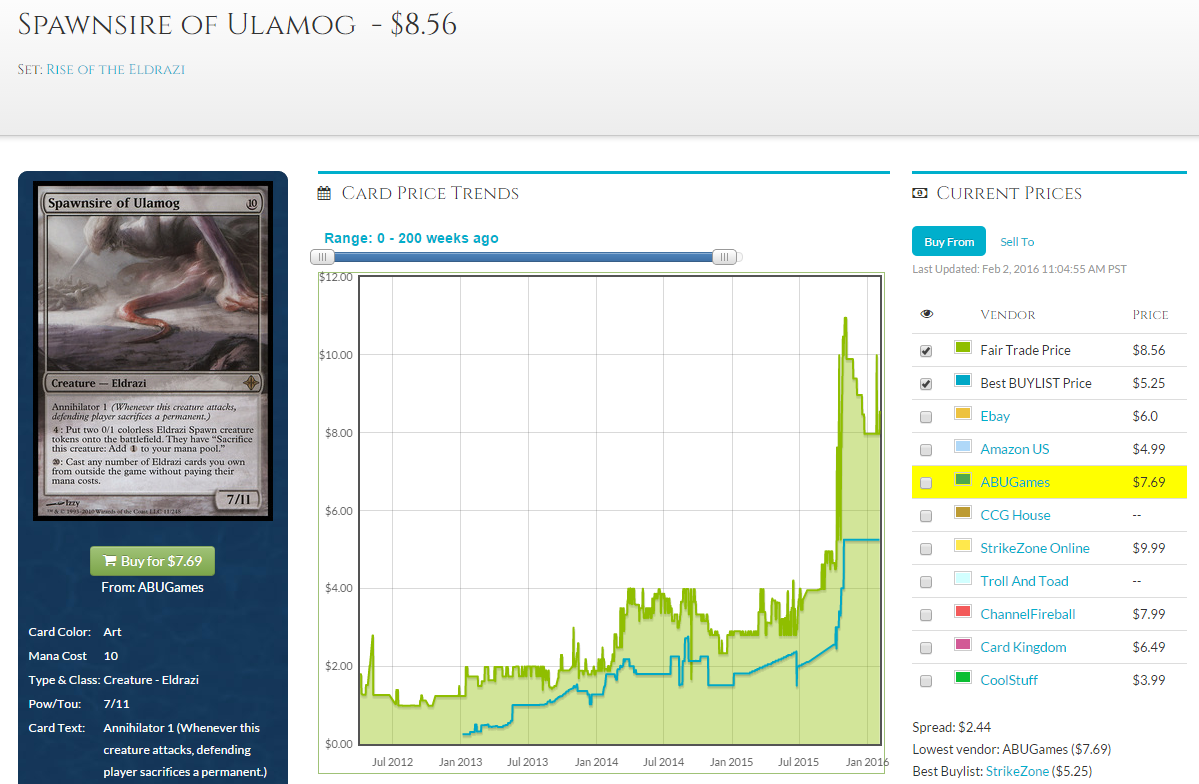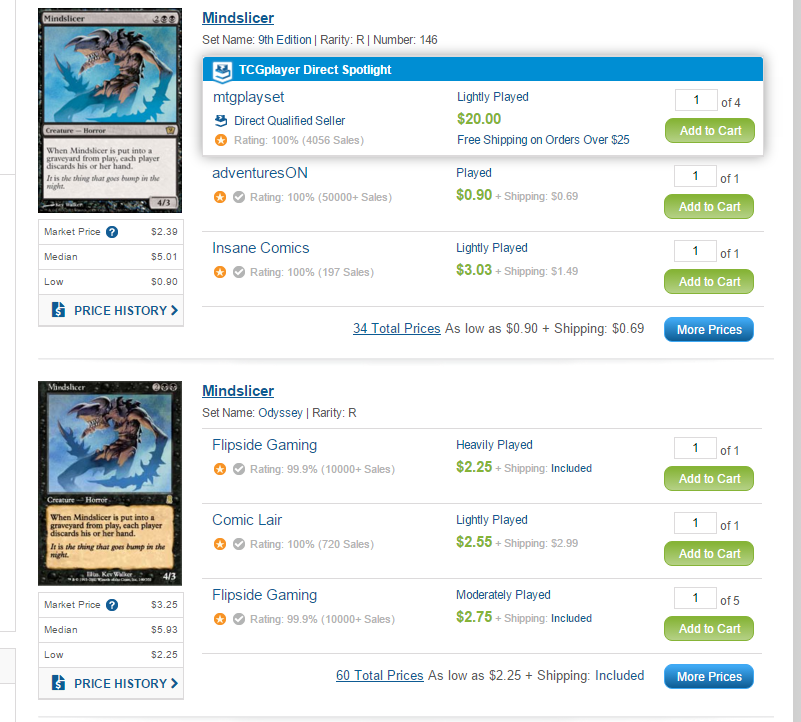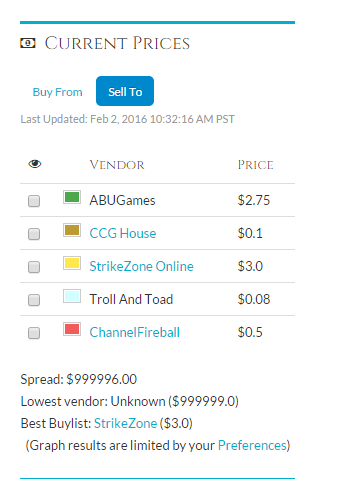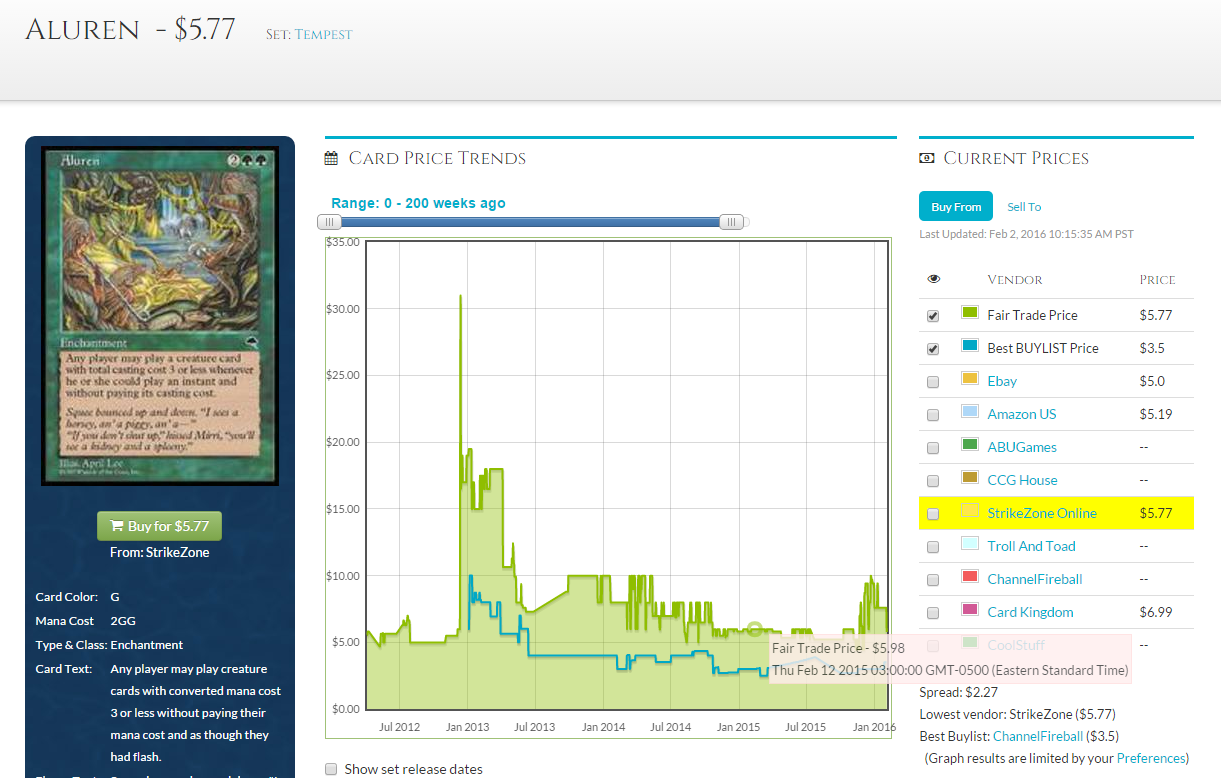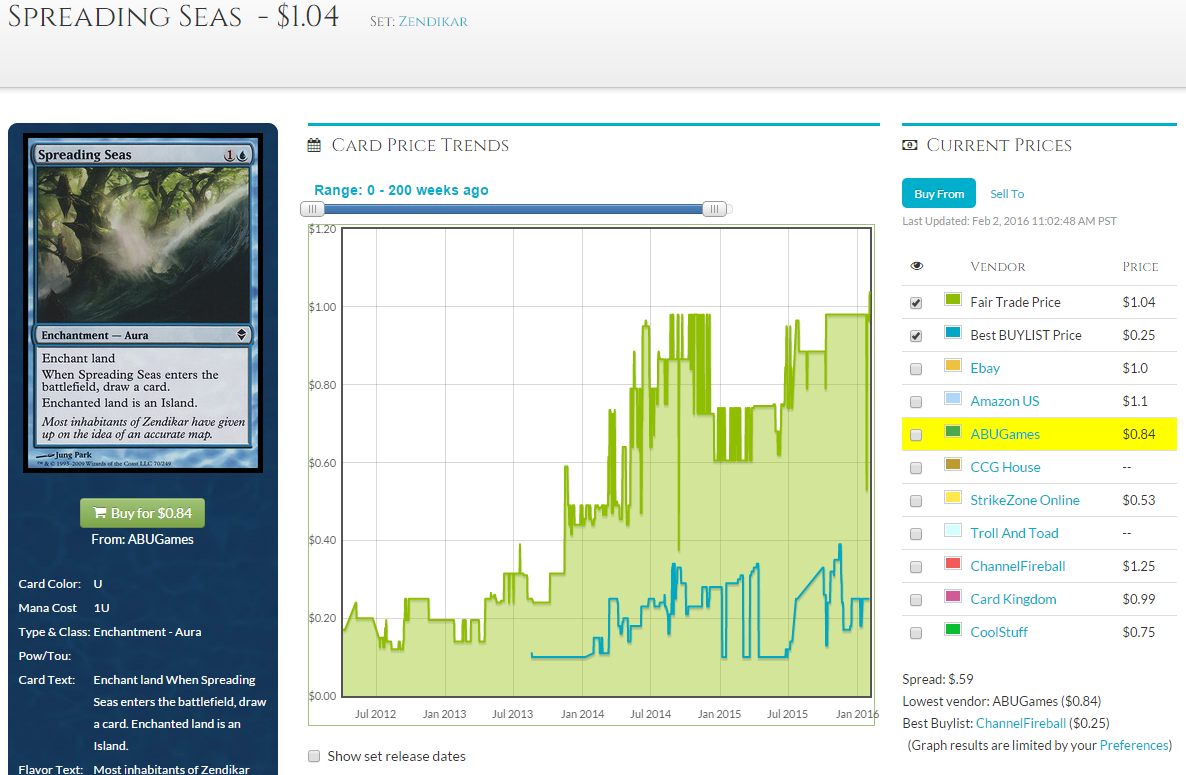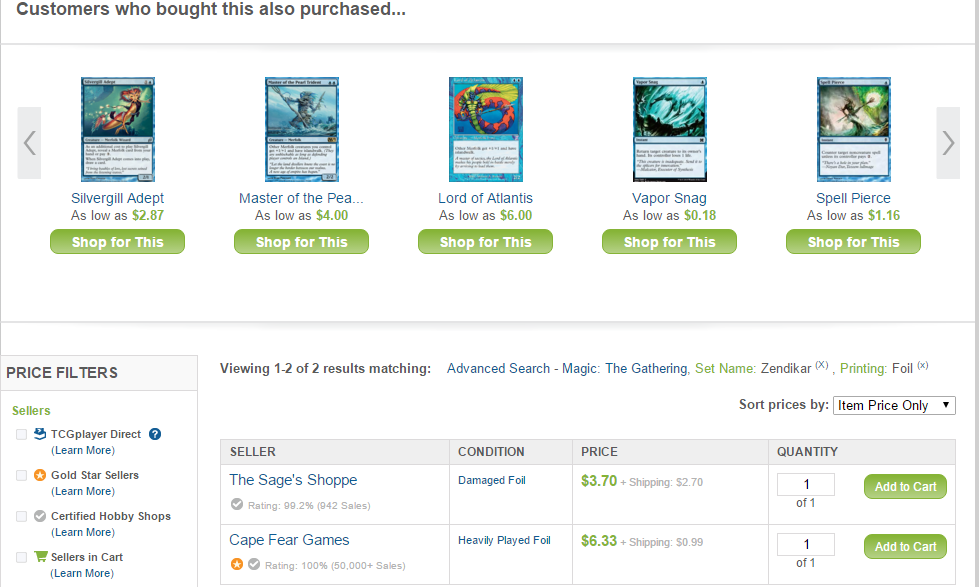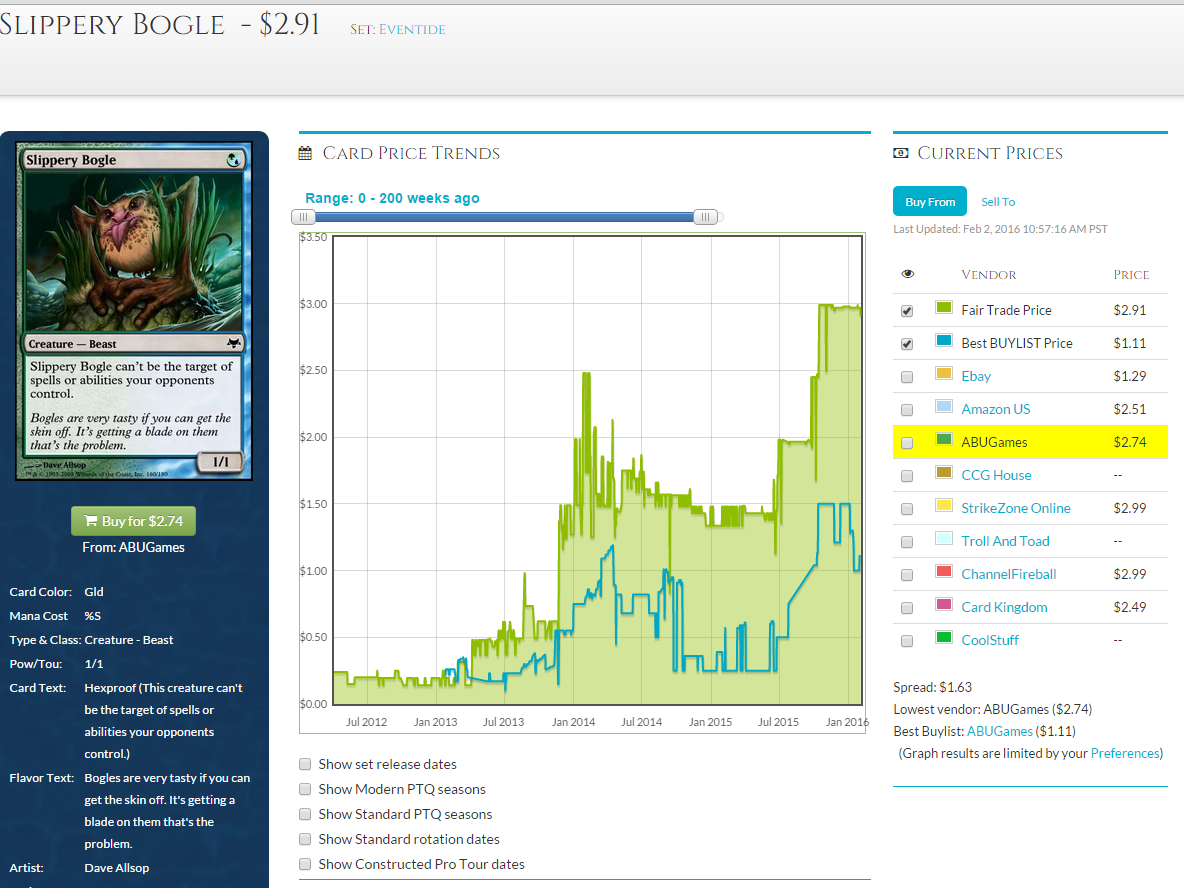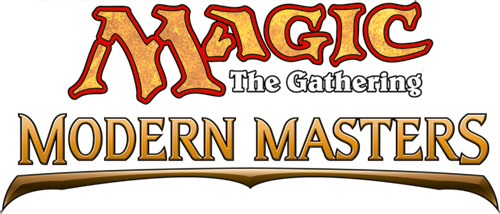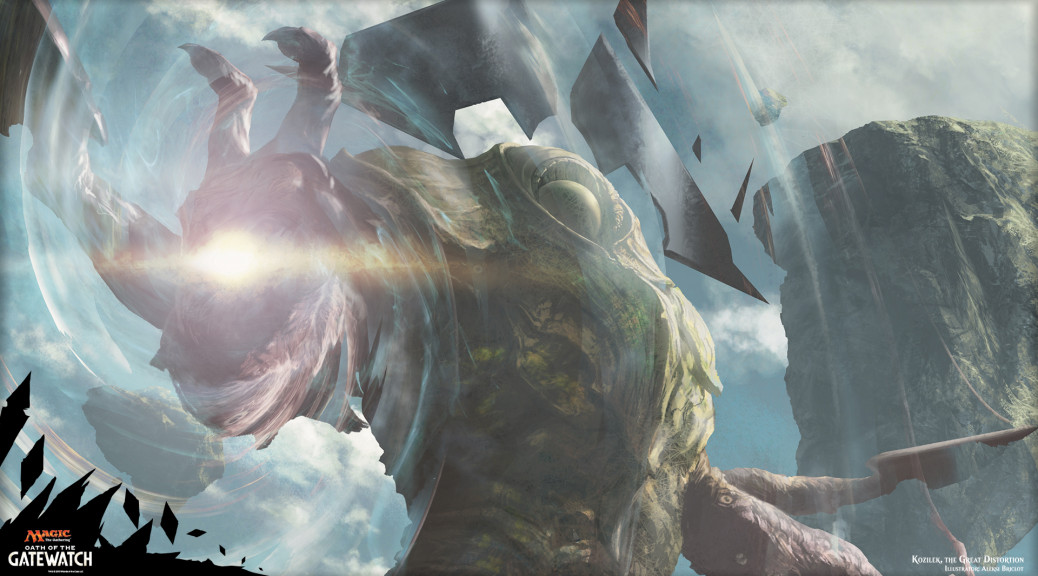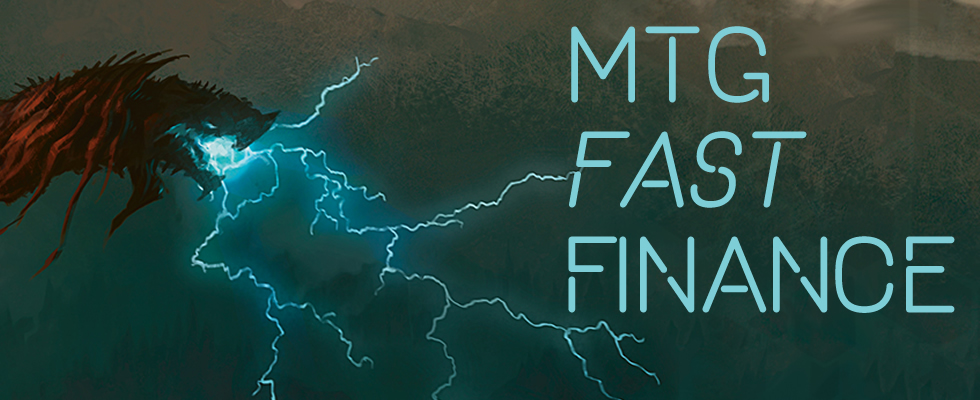I really enjoy when I get to spend an entire article talking about a single card as a case study. I find it fun to break down every single aspect of a card, dissect the possible reasons and explanations behind shifts in price, and use that card as a textbook example for future buyouts, price spikes, or other shifts. My two other written examples of this in the recent past were on Spawnsire of Ulamog and Mindslicer, which were both interesting examples of phenomena in the Magic finance ecosystem with trends that were supposed to be easily predictable.
While Spawnsire was alleged to be a purely speculator-driven buyout, the levels of consistent demand that the card has shown since proved its true worth as a casual stalwart in 60-card kitchen table Eldrazi lists that were juiced up by the introduction of Battle for Zendikar. Now that a large number of those players have already picked up their Spawnsires for their non-competitive decks, we can see the demand for the card recede; Oath of the Gatewatch wasn’t nearly as exciting for Spawny.
Mindslicer has not been as resilient to decline, but it’s certainly surprised me that the card has not dropped to dollar-rare status after the past two weeks. While none of us will ever know exactly how much money the mystery person made by buying out all of the internet of this stupid 4/3, we’ve already seen the price drop to a more rational level.
It’s down 50 percent from the $10 that it was hanging at when I dedicated a week to discussing the buyout, and it seems to have settled for the most part. While I’m sure some of you are preparing to shout, “But DJ! The Master Buyoutmancer was able to maintain the price of Mindslicer at a level over 1000 percent higher than what it started at! You said that these evil people can’t make cards jump by ridiculous percentages and stay at those prices without actual demand.”
That’s right, I did say that. The key here is that we’ve finally reached a point in the race to the bottom where other stores are willing to partake in the transactions, and feel safe enough about selling Mindslicers at the new price that they’re putting the card on their buylists.
ABUGames (excellent buylist) and StrikeZone Online (eh…) are both willing to take your copies of Mindslicer off your hands, and pay you actual cash dollars due to their confidence that they can resell these copies at the new established price point. While everyone’s initial reaction (including my own) to the Mindslicer buyout was that it was going to fail, crash, and burn back down to bulk, the individual(s) who made the decision to purchase all of the available copies was confident enough that a new price would be somewhat sustainable. Instead of the good old Aluren example where the card was bought out and then forced back down to its original value due to no true demand, Mindslicer has proven against the odds that it has legitimate demand from stores and players alike.
Washed Off Topic
Wait, where was I? Oh, right. I was going to try and write another article about a card in which I’m fairly confident in preparation for the Modern Pro Tour (yes, the same Pro Tour that I said I couldn’t care less about on the latest episode of Cartel Aristocrats). Before I go any further, I’m going to make a tiny, tiny disclaimer. Yes, I own roughly 60 copies of this card. Yes, I recognize that my writing about this card has the potential to act as a catalyst, speeding up the process at which players purchase their copies in a race to lock in their sets before risking supply running too low. For the umpteenth time, I link you to Derek Madlem’s well-written article about The Observer Effect.
However… I believe that the Pro Tour and those watching coverage will have a much stronger impact on the price and demand of a card than my content creation here at MTGPrice does. Due to the fact that my article comes out on Thursday, February 4, and the Pro Tour starts on the 5th, you should have plenty of time to buy non-foils of this card if you need them for future Modern endeavors. I would hope that sellers on TCGplayer don’t cancel orders for a card that’s this cheap with such a low expected price jump, but you never know.
Foils
By the time this article goes live, it will probably be too late to buy foil copies of Spreading Seas. There are zero on eBay below $15, and the ones that are $15 are being shipped all the way from Europe. TCGplayer has a whopping two foils as of February 2, and they were both probably fished out of a toilet.
The only online vendor that I can personally find with any reasonable number of copies left is SCG, with twenty MP ones at $7.88 each (disclaimer on the disclaimer: I bought ten SP foils tonight at $8.99 each). For those of you who have been holding onto foil copies in anticipation of a future spike, I suggest selling into any Pro Tour hype you see, and trying to get around $20 for a solid double-up.
Non-foils
As for the non-foils, there are still at least 500 copies on TCGplayer alone, and another 100 on SCG. That should prevent any immediate “oh my god, Spreading Seas is a $5 common, the world is ending” tweets. I highly doubt that happens. Don’t buy a ton of Spreading Seas at $2 each expecting to make a billion dollars, because you won’t. If you happen to own some non-foils, I would wait and see what the Pro Tour does to the card. If Merfolk pounds some faces in or an alternate controlling shell shows up housing Seas, then we could be in for a nice little bump, mimicing the trends of Slippery Bogle and Wild Nacatl (speaking of Nacatl, Spreading Seas does an excellent job of making sure that cat stays wet, in addition to washing away the manabases of Tron and Eldrazi).
If Seas shows even a drop of on-camera play this weekend, we could certainly see a bump up to $3 to $4 on non-foils in the short term.
So what are your other spec targets for the Pro Tour? While I’ll unfortunately be too busy to watch coverage of the event, our own James Chillcott will be providing up to date text coverage to make sure you don’t miss any potential new decks or cards seeing play.
Until next week! By then, I’ll be on my way to Georgia, but I should still have an article up on that day to keep you busy.
End Step
- Laboratory Maniac is four times more expensive than you thought he was. “Oh, that card is a silly little dollar rare. It can’t possibly affect me.” WRONG. Card is four freaking American dollars, courtesy of the non-competitive market. Excuse me while I run to the store and pull a dozen of these out of my dollar box before it’s too late.
- Ad Nauseam is finally starting to perk up from its’ bottom of $2 to $3. If you need these or Phyrexian Unlifes, buy them now. The deck can be very hard to interact with, considering it draws its entire deck for answers to kill the Leyline of Sanctity that you put down.


